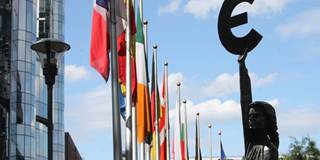The biggest risk for the European Union is to remain mired in outdated structures and to succumb to inertia. If it is to survive in a rapidly changing and increasingly challenging world, the EU needs a new model of European integration that abandons the principle of "ever closer union."
PARIS – “Italy,” a contemptuous Metternich said two centuries ago as the peninsula was split into a myriad of fiefdoms, “is only a geographical expression.” Some in Beijing, Moscow, New Delhi, and even Washington regard Europe the same way. They acknowledge that the European Union matters for trade agreements and currency issues, but consider it too irresolute to be a real player in today’s global power game, and too divided to cope with security and migration challenges. Proving them wrong is the task that Europe must now tackle.
Existential debates are admittedly as old as the EU – and so pervasive that they seem to be part of its identity. But they are also as alien to the vast majority of citizens as they are familiar to the small circle of policy wonks who obsess over them. So, one could be forgiven for ignoring Europe’s latest identity crisis.
That would be a serious mistake. To survive in a different, much tougher world, the EU must redefine its purpose. It was mainly designed to steer internal integration; now it must confront external threats. It used to be the champion of rules; it is unprepared for the new, transactional game of geopolitics. The US looked after its security; President Donald Trump regards this responsibility as an excessive burden. Refugee flows were a negligible trickle; though they are back to low levels, the massive surge in 2015 exposed the dysfunctional character of the European asylum regime.

PARIS – “Italy,” a contemptuous Metternich said two centuries ago as the peninsula was split into a myriad of fiefdoms, “is only a geographical expression.” Some in Beijing, Moscow, New Delhi, and even Washington regard Europe the same way. They acknowledge that the European Union matters for trade agreements and currency issues, but consider it too irresolute to be a real player in today’s global power game, and too divided to cope with security and migration challenges. Proving them wrong is the task that Europe must now tackle.
Existential debates are admittedly as old as the EU – and so pervasive that they seem to be part of its identity. But they are also as alien to the vast majority of citizens as they are familiar to the small circle of policy wonks who obsess over them. So, one could be forgiven for ignoring Europe’s latest identity crisis.
That would be a serious mistake. To survive in a different, much tougher world, the EU must redefine its purpose. It was mainly designed to steer internal integration; now it must confront external threats. It used to be the champion of rules; it is unprepared for the new, transactional game of geopolitics. The US looked after its security; President Donald Trump regards this responsibility as an excessive burden. Refugee flows were a negligible trickle; though they are back to low levels, the massive surge in 2015 exposed the dysfunctional character of the European asylum regime.